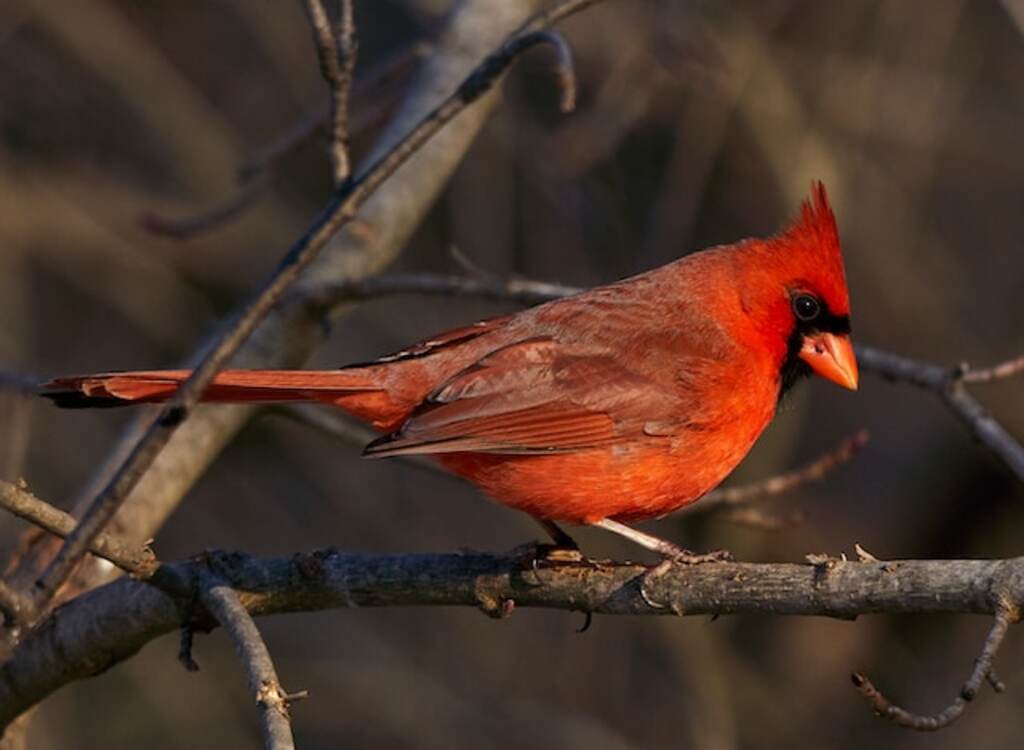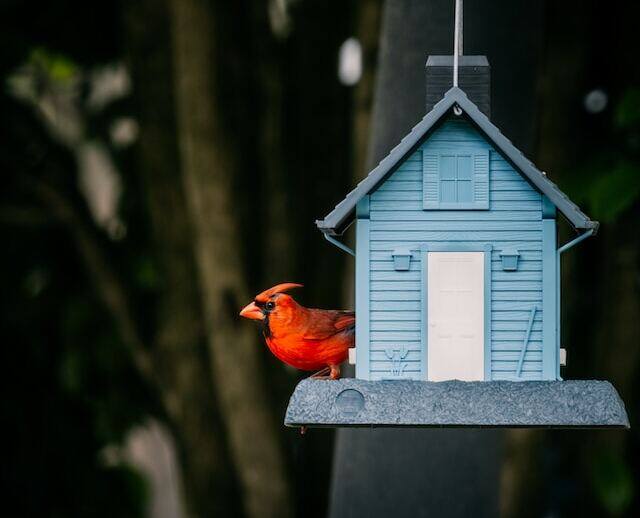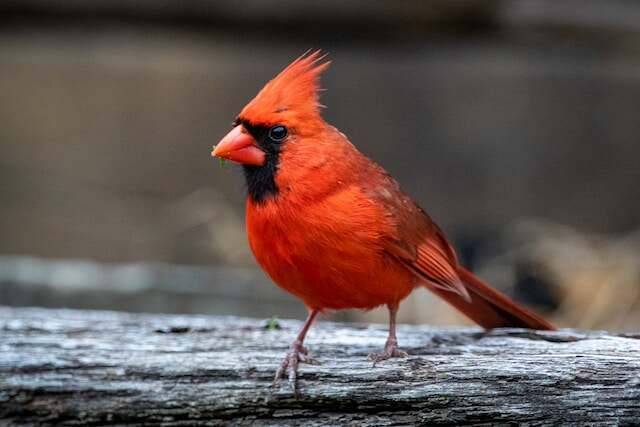If you’ve ever glanced outside your window in North Carolina and spotted a splash of bright red flitting through the trees, chances are you’ve seen the North Carolina State Bird, the Northern Cardinal. This bird isn’t just another pretty face; it’s a bold, vibrant symbol that’s woven into the state’s identity.
Whether you’re a seasoned birdwatcher or just someone who appreciates a pop of color in your backyard, the cardinal’s story is worth knowing. So, let’s chat about why this fiery red bird stole the spotlight and became North Carolina’s official feathered celebrity.
Table of Contents
- 1 Meet North Carolina’s Feathered Celebrity
- 2 Why the Cardinal? (Seriously, Why Not?)
- 3 How Did the Cardinal Win the State Bird Crown?
- 4 What Makes the Northern Cardinal So…Extra?
- 5 Where to Spot Cardinals in North Carolina
- 6 Cardinal Fun Facts You Didn’t Know You Needed
- 7 The Cardinal’s Cultural Clout
- 8 My Personal Cardinal Moment
- 9 Want More Cardinals in Your Life? Here’s How
- 10 Wait – Do Cardinals Really Visit After Someone Dies?
- 11 Final Thoughts: More Than Just a Pretty Bird
- 12 Author
Meet North Carolina’s Feathered Celebrity
Let’s be real, if there were a “Most Likely to Be Noticed” award for backyard birds, the Northern Cardinal would win by a landslide. I mean, have you seen that bright red plumage? It’s like nature decided to make a bird you could spot even in the dead of winter.
North Carolina officially picked the Northern Cardinal as its state bird in 1943, and honestly, it was a solid choice. These birds are easy to recognize, fun to watch, and pretty much scream ‘Southern charm.’
But there’s more to this crimson beauty than just good looks, so let’s talk cardinals. Why are they so special? Why do they sing so much? And is it true they mate for life? (Spoiler: yeah, kind of.)
Why the Cardinal? (Seriously, Why Not?)
You might be wondering, “Out of all the birds in North Carolina, why pick the cardinal?”
Fair question. Here’s the deal:
- Cardinals live in the state all year round. No need to go chasing them, they’ll be there whether it’s July or January.
- They’re easy to identify. Males are bright red with a black face mask; females wear more subtle tan tones with reddish highlights.
- Their song is unforgettable. Think: clear, whistling phrases like cheer, cheer, cheer or birdie, birdie, birdie.
- They show up in almost every backyard. Urban, rural, suburban, it doesn’t matter. If you’ve got trees, you’ve probably got cardinals.
So yeah, the cardinal is basically the friendliest neighbor in the bird world, no HOA complaints, just good vibes.
How Did the Cardinal Win the State Bird Crown?
Ever wondered how the Northern cardinal snagged the title of North Carolina’s state bird? Spoiler: it wasn’t just because it’s red and flashy.
Back in the 1940s, the North Carolina Bird Club got schools, bird groups, and local papers involved in a big voting contest. People from all over the state showed up with plenty of bird picks, but the cardinal came out on top.
Here’s who it beat out:
- Eastern Bobwhite
- Wild Turkey
- Carolina Parakeet
- Cedar Waxwing
And yeah, the cardinal didn’t just sneak by, it won big. Why? Here’s the deal:
- Bright red feathers that grab your attention even on the gloomiest day
- Sweet song that turns your backyard into a mini concert
- Lives everywhere in North Carolina, from city parks to the mountains
- And FYI, this bird has been charming folks since the 1600s when European explorers first spotted it
By March 1943, the North Carolina General Assembly made it official and passed the law naming the Northern cardinal the state bird. So it’s not just popular, it’s the real deal.
Fun fact: The Carolina chickadee briefly tried to claim the title in the 1930s but flopped because people thought its nickname, “tomtit,” was a bit silly for a state bird. Can’t say I blame them. 🙂
I still remember seeing my first cardinal in a friend’s backyard, bright as a firetruck and totally unbothered by my camera. Honestly, it’s hard not to like a bird that’s so confident and everywhere. IMO, that’s why it’s the perfect symbol for North Carolina.
So next time you spot one, know it’s not just a bird, it’s a little piece of North Carolina pride flying around.
What Makes the Northern Cardinal So…Extra?
Let’s break down a few reasons why this bird gets so much attention.
That Color, Though 🎨
Male cardinals look like they were dipped in a can of red paint. That fire-engine red color isn’t just for show, it actually signals health and vitality. The brighter the feathers, the better the diet (and the better the chance of attracting a mate).
Female cardinals? They’re more muted with warm browns and red accents, but still stunning. Honestly, IMO, they’ve got that whole understated beauty thing going on.
The Singing Never Stops
Ever heard a bird chirping non-stop at 6 a.m. like it’s auditioning for The Voice? That’s probably a cardinal.
- Males sing to defend territory and woo the ladies.
- Females sing too, especially from the nest (which is rare in the bird world).
- Their songs can sound different depending on where they live. Yep, cardinals have regional “accents.” Kinda like us. 🙂
They’re Basically Relationship Goals
Here’s something kind of adorable: cardinals are monogamous and often mate for life.
They:
- Sing to each other during courtship
- Feed each other seeds beak-to-beak (yep, bird kisses)
- Raise multiple broods a year together
Ever seen a male cardinal feed his mate on a snowy branch? If not, prepare your heartstrings. It’s pure rom-com material.
Where to Spot Cardinals in North Carolina
Short answer: pretty much everywhere.
Longer answer: they especially love areas like:
- Woodlands and forest edges
- Backyards with bird feeders
- Parks, gardens, and open shrubs
Tip: Want to make your backyard cardinal central? Toss out some black oil sunflower seeds and safflower seeds. Skip the mixed seed stuff, cardinals know filler when they see it.
Cardinal Fun Facts You Didn’t Know You Needed
Let’s sprinkle in some trivia. You never know when you’ll need to flex bird knowledge at a party. 😏
- They don’t migrate. Cardinals tough it out year-round.
- They’re not just in North Carolina. Seven other states claim them as their state bird, including Virginia and Ohio. (Popular much?)
- Their red color comes from carotenoids, plant pigments found in their food. No berries = dull feathers.
- They get aggressive with reflections. Ever seen a cardinal attack a window or mirror? They think it’s another bird invading their turf. #mirrorfight
The Cardinal’s Cultural Clout
This bird isn’t just a backyard staple, it’s basically a celebrity.
- They’re symbols of hope and loved ones “visiting” from the afterlife. You’ve probably heard the saying: “When a cardinal appears, angels are near.”
- They’ve got sports teams named after them (hey, St. Louis).
- They show up in art, tattoos, songs, you name it.
Why? Probably because they’re bold, bright, and totally unforgettable.
My Personal Cardinal Moment
Okay, story time.
One winter, after a rough week (you know, the kind where even your coffee lets you down), I looked out my kitchen window and saw this ridiculously red cardinal perched on my snow-covered fence.
He just sat there, puffed up like he owned the yard.
And for whatever reason, it actually made me feel better. Like, “Hey, if this little guy can handle snow with that much swagger, I can make it through today.”
I started keeping my feeder stocked after that, and now? Cardinals stop by all the time.
Moral of the story? Never underestimate the power of a small red bird and a quiet moment.
Want More Cardinals in Your Life? Here’s How
If you’re reading this and thinking, “Okay, I need these birds in my yard ASAP,” here’s a quick cheat sheet.
What Cardinals Love:
- Seed Types: Black oil sunflower seeds, safflower seeds, peanut bits
- Feeders: Platform or hopper feeders (they don’t love hanging tube feeders)
- Water: Bird baths! Bonus points if it’s heated in winter
- Shelter: Dense shrubs, evergreen trees, brush piles
Pro tip: Keep your feeders clean. Dirty feeders = sad birds (and health risks).
Wait – Do Cardinals Really Visit After Someone Dies?
Alright, let’s address the cardinal-in-the-room. 😅
A lot of people believe that cardinals appear when someone you love is nearby in spirit. Is it true? That’s up to you.
What I do know: when you’re missing someone and a cardinal shows up, it hits different. Whether it’s a coincidence or something more, I say take the moment.
Birds don’t care what you believe, but they do have a way of showing up right when you need them.
Final Thoughts: More Than Just a Pretty Bird
So, yeah. The Northern Cardinal earned its place as North Carolina’s state bird, and then some.
It’s bold, loyal, loud in the best way, and always up for a backyard cameo. Whether you’re a lifelong birder or just someone who likes pretty things with feathers, this bird delivers.
Want to see one right now? Go peek outside. Seriously. You might catch a flash of red in the bushes.
And next time you hear that cheer, cheer, cheer, maybe stop and listen.
You’re not just hearing a bird. You’re hearing North Carolina’s most famous feathered resident doing what it does best, being awesome.
Cardinals in Your Backyard?
Have you spotted one lately? Maybe they swing by your yard every morning like they own the place. I wouldn’t be surprised, they tend to act like royalty. And let’s be real, your camera roll probably already has a few dozen bird photos. 😄
FYI: Keep those feeders full this winter. Your future self (and your neighborhood cardinals) will thank you.





